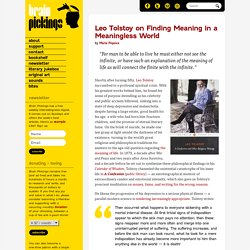

The Baloney Detection Kit: Carl Sagan’s Rules for Bullshit-Busting and Critical Thinking. Carl Sagan (November 9, 1934–December 20, 1996) was many things — a cosmic sage, voracious reader, hopeless romantic, and brilliant philosopher.

But above all, he endures as our era’s greatest patron saint of reason and critical thinking, a master of the vital balance between skepticism and openness. In The Demon-Haunted World: Science as a Candle in the Dark (public library) — the same indispensable volume that gave us Sagan’s timeless meditation on science and spirituality, published mere months before his death in 1996 — Sagan shares his secret to upholding the rites of reason, even in the face of society’s most shameless untruths and outrageous propaganda.
Through their training, scientists are equipped with what Sagan calls a “baloney detection kit” — a set of cognitive tools and techniques that fortify the mind against penetration by falsehoods: The kit is brought out as a matter of course whenever new ideas are offered for consideration. The Soul of an Octopus: How One of Earth’s Most Alien Creatures Illuminates the Wonders of Consciousness. “Despite centuries of investigation by everyone from natural historians, psychologists, and psychiatrists, to ethicists, neuroscientists, and philosophers, there is still no universal definition of emotion or consciousness,” Laurel Braitman wrote in her terrific exploration of the mental lives of animals. Virginia Woolf defined consciousness as “a wave in the mind,” but even if we’re able to ride the wave, we hardly know the ocean out of which it arises.
During my annual visit to NPR’s Science Friday to discuss my choices for the year’s best science books, my co-guest — science writer extraordinaire Deborah Blum — mentioned a fascinating book that had slipped my readerly tentacles, one that addresses this abiding question of consciousness with unparalleled rigor and grace: The Soul of an Octopus: A Surprising Exploration into the Wonder of Consciousness (public library) by naturalist, writer, and documentary filmmaker Sy Montgomery.
Montgomery begins with a seemingly simple premise. The Third Self: Mary Oliver on Time, Concentration, the Artist’s Task, and the Central Commitment of the Creative Life. “In the wholeheartedness of concentration,” the poet Jane Hirshfield wrote in her beautiful inquiry into the effortless effort of creativity, “world and self begin to cohere.

With that state comes an enlarging: of what may be known, what may be felt, what may be done.” But concentration is indeed a difficult art, art’s art, and its difficulty lies in the constant conciliation of the dissonance between self and world — a difficulty hardly singular to the particular conditions of our time. Two hundred years before social media, the great French artist Eugène Delacroix lamented the necessary torment of avoiding social distractions in creative work; a century and a half later, Agnes Martin admonished aspiring artists to exercise discernment in the interruptions they allow, or else corrupt the mental, emotional, and spiritual privacy where inspiration arises. Oliver writes: It is a silver morning like any other. When Breath Becomes Air: A Young Neurosurgeon Examines the Meaning of Life as He Faces His Death. All life is lived in the shadow of its own finitude, of which we are always aware — an awareness we systematically blunt through the daily distraction of living.

But when this finitude is made acutely imminent, one suddenly collides with awareness so acute that it leaves no choice but to fill the shadow with as much light as a human being can generate — the sort of inner illumination we call meaning: the meaning of life. That tumultuous turning point is what neurosurgeon Paul Kalanithi chronicles in When Breath Becomes Air (public library) — his piercing memoir of being diagnosed with terminal cancer at the peak of a career bursting with potential and a life exploding with aliveness. Partway between Montaigne and Oliver Sacks, Kalanithi weaves together philosophical reflections on his personal journey with stories of his patients to illuminate the only thing we have in common — our mortality — and how it spurs all of us, in ways both minute and monumental, to pursue a life of meaning. Leo Tolstoy on Finding Meaning in a Meaningless World.
By Maria Popova “For man to be able to live he must either not see the infinite, or have such an explanation of the meaning of life as will connect the finite with the infinite.”

Shortly after turning fifty, Leo Tolstoy succumbed to a profound spiritual crisis. With his greatest works behind him, he found his sense of purpose dwindling as his celebrity and public acclaim billowed, sinking into a state of deep depression and melancholia despite having a large estate, good health for his age, a wife who had born him fourteen children, and the promise of eternal literary fame. On the brink of suicide, he made one last grasp at light amidst the darkness of his existence, turning to the world’s great religious and philosophical traditions for answers to the age-old question regarding the meaning of life.
He likens the progression of his depression to a serious physical illness — a parallel modern science is rendering increasingly appropriate. Frustrated, Tolstoy answers his own question:
BP10. BP++